Edible Flowers
I get a lot of questions related to sourcing and using edible flowers. Here are a few of the things I do to ensure I have a supply throughout the year.
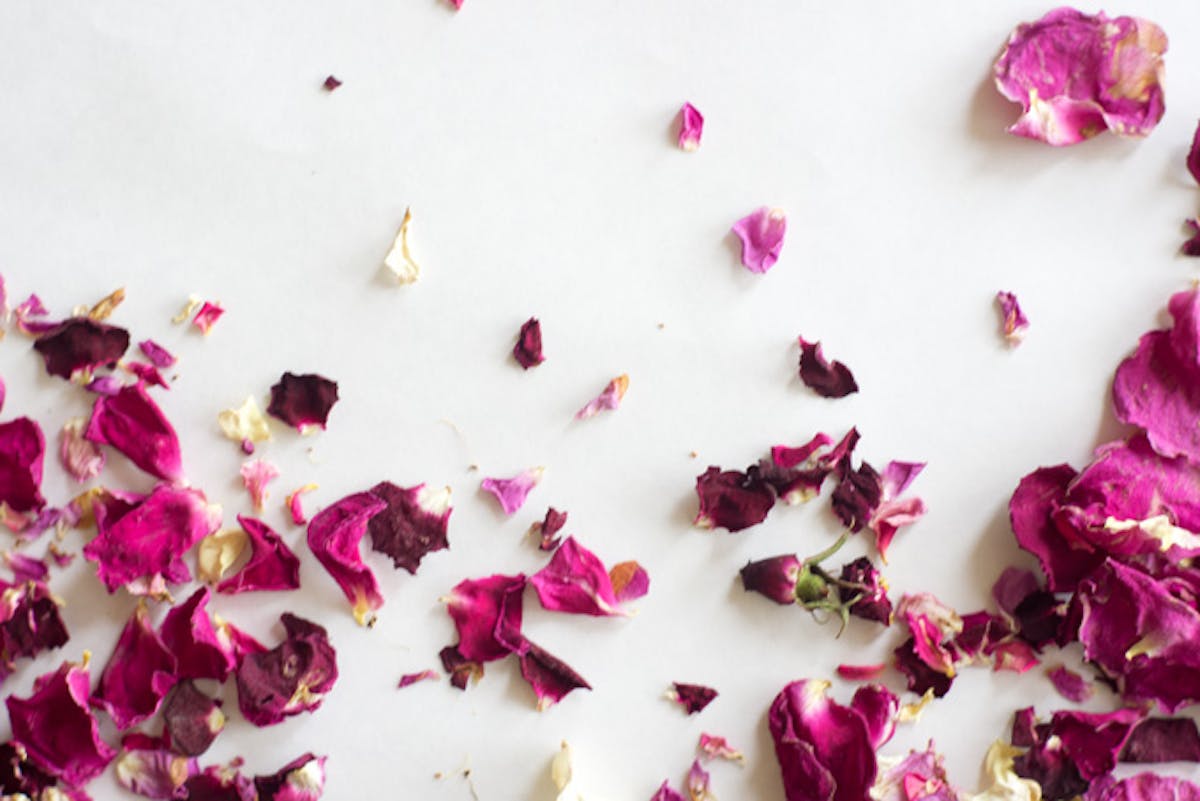
I like to use edible flowers - both fresh and dried - in my cooking. The fragrance, the color, the range of petal shapes - it all makes them irresistible to me. Spring and summer are when I encounter the widest range of edible blossoms, and because I get a lot of questions related to sourcing and using edible flowers, I thought I'd write up a few of the things I do to ensure I have a supply throughout the year.
Safety First!
Before consuming any flower, check with a medical or plant expert. You need to know exactly what you’re consuming. Also, please keep in mind, not all parts of the flower are edible, and some varietals should be avoided if you are pregnant or nursing. There are some many good online and offline references, so be sure to read up.

Books About Edible Flowers
Books about edible flowers are a great way to learn about this rich topic and there are some wonderful new titles available. These are a few to look for:
- Edible Flowers: How, Why, and When We Eat Flowers by Monica Nelson — I contributed a miso soup with chamomile recipe to this beautifully comprehensive title from the founding creative and photo director of Wilder Quarterly. The book highlights 100 edible flowers arranged alphabetically along with recipes from a wide range of chefs and cooks. And, if you’re looking for an even deeper dive, there is a fantastic list of related books on the topic in the back of the book.
- The Edible Flower: A Modern Guide to Growing, Cooking and Eating Edible Flowers by Erin Bunting
- Eat Your Flowers: A Cookbook by Loria Stern
- Cooking with Flowers: Sweet and Savory Recipes with Rose Petals, Lilacs, Lavender, and Other Edible Flowers by Miche Bacher
- The Edible Flower Garden by Rosalind Creasy (1999)
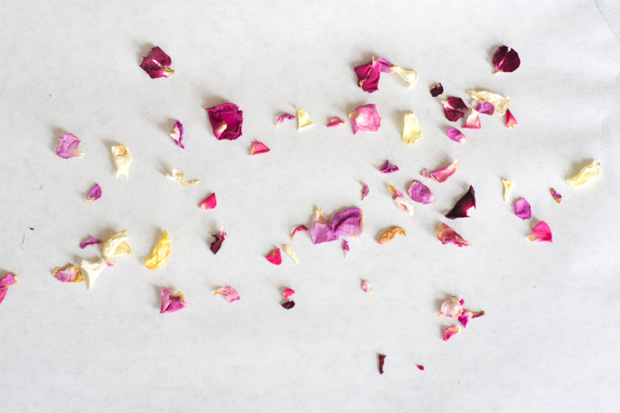
Where to Buy Edible Flowers
Farmers’ markets are a great place to buy edible flowers. Ask if you don’t see them displayed. Because they are fragile, farmers often keep them in a cooler. Beyond that, you can sometimes find them in the produce department of certain grocery stores, typically refrigerated near the herbs.
Grow Your Own Edible Flowers
The most economic way to source edible flowers is to grow them yourself. Harvesting flowers from your own yard is incredibly rewarding (and beautiful!). Chive flowers, thyme and oregano flowers, lemon blossoms, and rose geranium are in bloom at different times throughout the year in our yard. They’re often the perfect accent that makes a salad or cake extra special. Look for plants at your local nursery or chat with any plant seller at your local farmers’ market, they often focus on edible varietals. There are also seed packets of available online and at garden centers.
What Are Some Common Edible Flowers?
Hibiscus, camomile, rose, violet, calendula, chive, basil, thyme, zucchini blossom, and nasturtium are commonly used in cooking, baking and beverages. There is a more comprehensive list below. Keep in mind, not all flowers are edible, some are poisonous, and proper identification is essential. Again, not all parts of the flower are edible, and some varietals should be avoided if you are pregnant or nursing, so please read up with some of the references I link to up above.
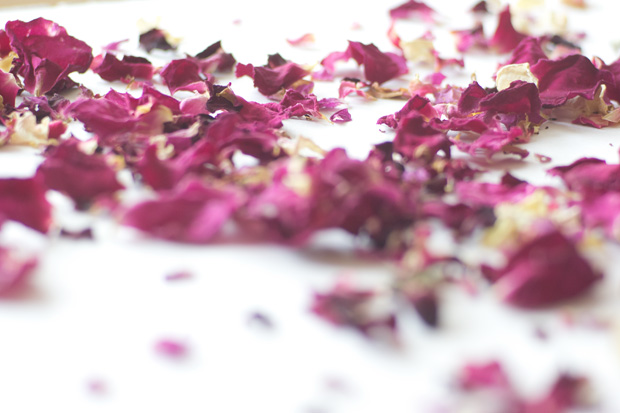
What to Make with Edible Flowers
I’ve included a number of the things I've learned down below, in the section that normally hosts the recipe. One of my favorite things to do, with certain edible flowers, is simply dry the petals. These organic rose petals (pictured) are about halfway through the process of drying, instructions below. They lose an incredible amount of volume as they dry, so even if you feel as if you're starting with more petals than you could possibly use, keep in mind you'll end up with far less than when you started.
Flower Inspiration
There are many amazing cooks and chefs working with edible flowers. One of my favorites is April Valencia at Masa Memory.
The #edibleflowers hashtag has nearly a million posts. You’ll see a lot of flower cookies, flowers on cakes, petals in ice cubes and the like. And then the occasional floral wildcard. Follow along to see the creative uses.
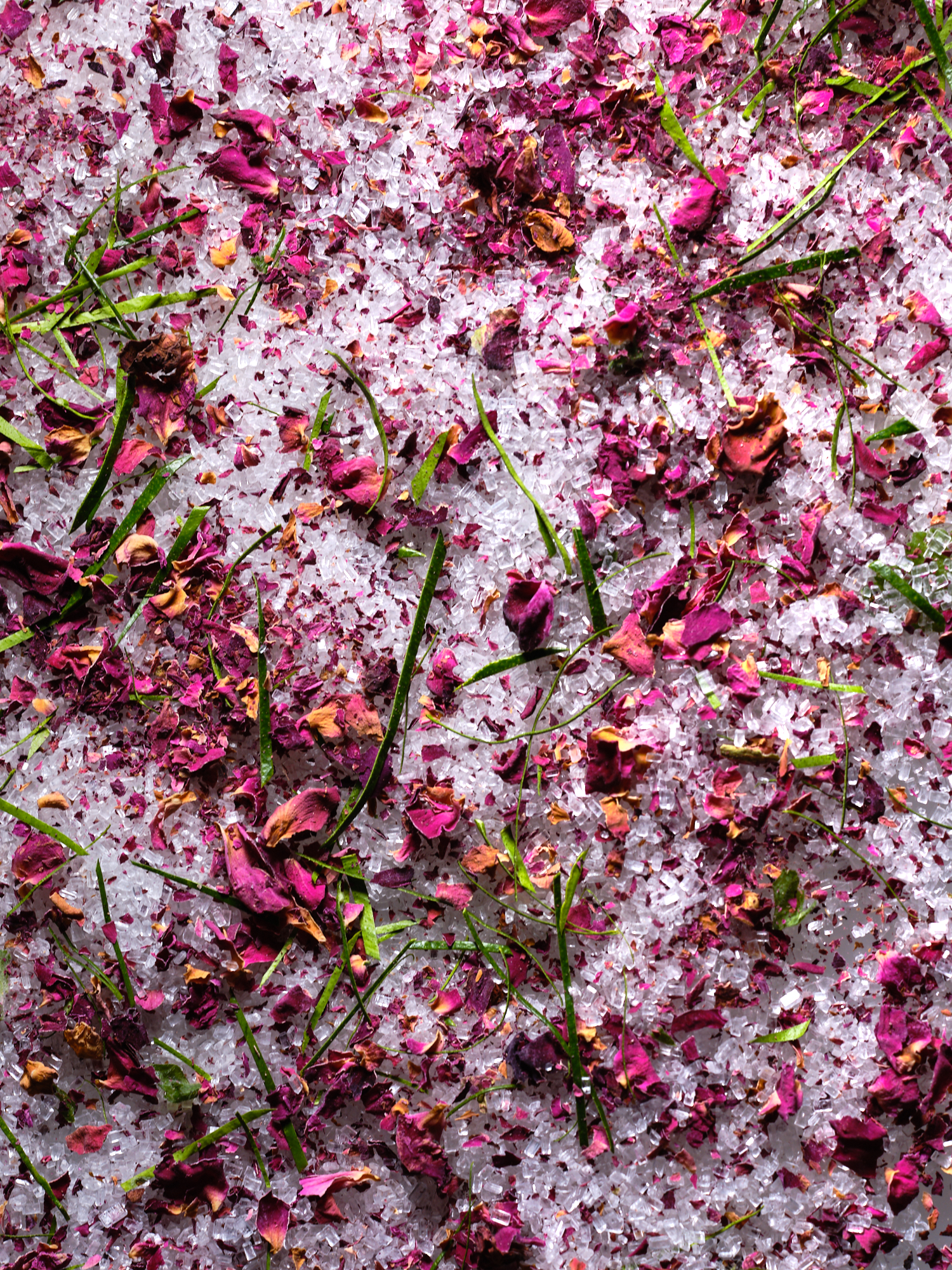
Rose Geranium Lime Sugar
One of the most prolific plants in my yard is a rose geranium. Sprawling out every year from a shallow pot, it determinedly sends up pretty lilac-shaded flowers. Keep an eagle eye out for rose geranium at your local nursery, the leaves perfume the world around them - perfect for infusing sugars, alcohol, and baked goods. I included a recipe for this rose geranium sugar in the Spice / Herb / Flower / Zest PDF I made for members of this site. You can find it in your account if you’re a member, or sign-up to be a member here.
Recipes
I've included more ideas and information in the recipe section below. Please let me know if you have other favorite edible flower ideas, uses, or references. I saw a rose petal paste the other day that looked incredible, and I'm always looking for other ideas, techniques to explore. On the list to try: Lilac Honey, Lilac Ice Cream or Lilac Sugar, & chive blossom vinegar xo -h
Here’s a rose petal granola, and a beautiful rhubarb rosewater syrup. These buttermilk berry muffins are dusted with rose cinnamon sugar. And I like to infuse iced green tea with a bit of rose in the infusion. Lastly, here’s a post I wrote about how to dry herbs, many of the best practices related to edible flowers applies here as well. Enjoy!
Edible Flowers
- any quantity of edible flowers
-
You basically have two options - you can buy them, or grow them. If you buy them, be sure to seek out organically grown flowers free of any spray or pesticides. If you grown them yourself, keep in mind you'll eventually be consuming them, so treat them accordingly.
-
hibiscus, rose, rose geranium, violet, calendula, chive, basil, thyme, cherry blossom, zucchini blossom, and nasturtium. Keep in mind, not all flowers are edible, some are poisonous, and proper identification is essential. Again, not all parts of the flower are edible, and some varietals should be avoided if you are pregnant or nursing, so please read up with some of the references I link to up above. On the rose front, heirloom varietals are broadly thought to have better flavor and fragrance, with newer roses often bred for appearance rather than flavor (fragrance).
-
Once cut, I tend to keep flowers in clean water until I'm ready to use them. They typically last this way from 1-5 days, with regular refreshing of the water. I'll trim or pluck petals from the vase as I need them. If I get the sense I might not use them entirely while fresh, I move to dry them before they go bad. (instructions below)
-
Drying flowers requires patience and a bit of space. I'll start by saying I haven't had luck drying flowers in a low-heat oven. The petals quickly lose color and vibrancy. Instead, I arrange them in a single layer on a parchment-lined baking sheet. Leave them for about a week, using your fingertips to toss them every day or so, or until dry and crisp. I usually wait until they seem completely dry, and then give them another couple of days to rid themselves of any residual moisture I might not be able to sense. At this point transfer to a tight jar or container.
Please refer to the list of books about edible flowers in the post about for more information and inspiration.
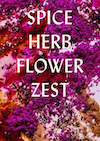
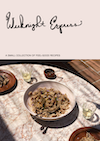

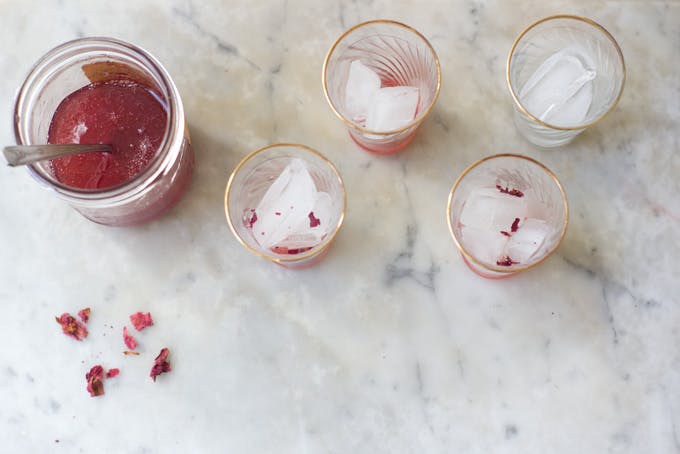
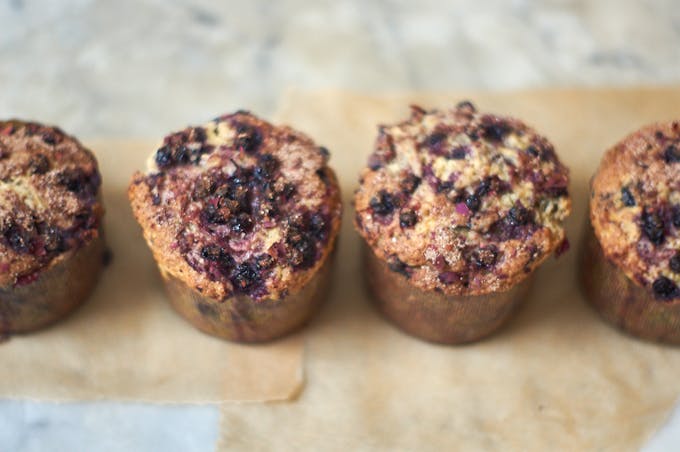
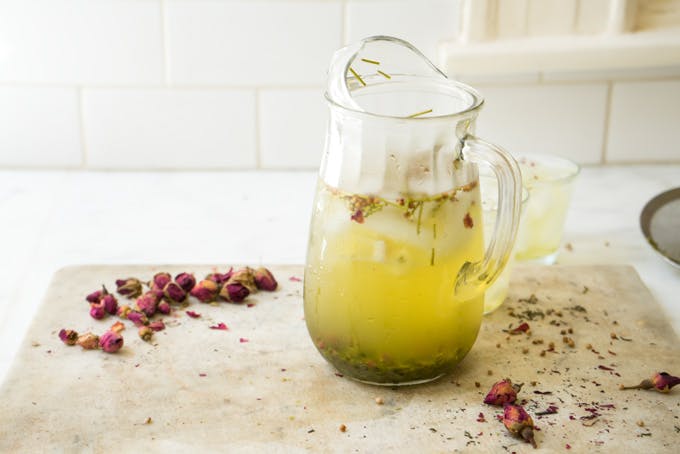
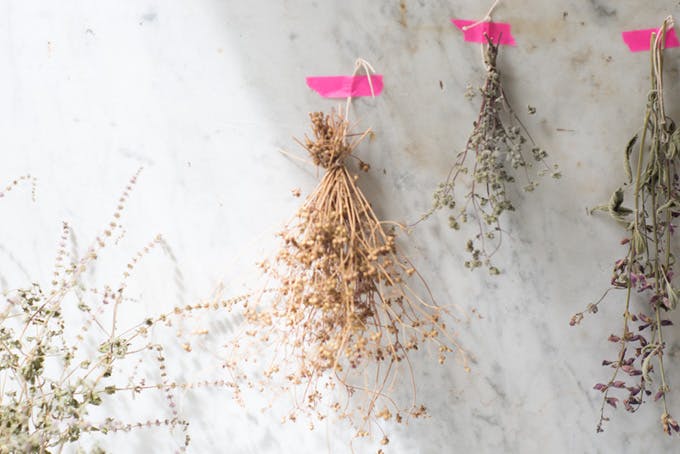
Post Your Comment
Comments
ooooh i use lavender flowers in my cooking a lot (a lemon lavender pound cake is really all i need in life)
heidi - LOVE your blog - always have - i am in fact the author of cooking with flowers and am so sorry a copy has not made it into your hands - how can i get one to you??? HS: No need! I'll go buy a copy. Congratulations on creating a book that so many people are excited about. xo!
I love this post! I moved from the States to the UK in 2011 and my eyes were opened to adding flowers to food. Since then I've been collecting all sorts of recipes on pinterest and making my own experiments, but I also enjoy looking up vintage recipes online when flowers used to play a bigger role in culinary. I am so grateful for your compilation of information here. Thanks
As a child I use to see my grand me buy these flowers and make jam from the petals. On the other hand she use to bring a long and big boiling pan and boil the rest of the flowers to have rose water from it. But where in the world I can get that pan from? Any help please ?
Oooh! Rose petal paste… Where did you see this?
Hi Frances, in one of the Ottolenghi books I think!
Now, where did I read about the rose gardener, whose future husband upon touring her garden began nibbling the rose petals, asking "Isn't that how you tell the best ones?"
What a beautiful fairy post! Lucky lady to have such a great access to delicious, heirloom, roses! I'm sure you know this but don't forget about rosehips! They are so tasty made into a honey syrup and served in a baklava. Also rose tea, oo-la-la, mixed with some tulsi, sweetened with honey.... that is some serious love tea right there.
I love using edible flowers in tea!
I have never used edible flowers in my cooking. I think it is so beautiful though. I definitely want to try soon.
I use a dehydrator to dry my flowers and herbs quick and easy. Check out Nesco model FD-61 which is what I use and love.
Thanks for the tip Mary!
love, love, love making rose and honey tea. Thanks for reminding me the beauty of edible flowers.
hello again heidi, i've had cherry blossom jams before, and it seems they are all prepared with pickled blossoms rather than fresh ones, as pretty much all sakura things are here! maybe i'll try and experiment myself. on another note, i've enjoyed your rose petal granola so much, and it has partly inspired me to make chamomile granola... not bad either! thanks always for your inspiration x
I love the sound of chamomile granola.
I've been eyeballing my day lilies the last few years, but I just don't have enough to eat instead of blooming. I saw they were initially grown in China for food, as all parts are considered edible (though with so many bred now, it's best to check before chomping). Lily blossoms for stuffing would be easier to source than squash.
Not really cooking with flowers but..... I like my boys (5&7) to think outside the box (supermarket) when it comes to food if they can. They often are found sucking on the sweet end of our nasturtium flowers that run rampant at the front of our house before school. My favorite though is getting them to stick borage flowers (pulled from the green) on the tips of their tongues while the other says "borage for courage" and then eating them down. Brave boys haha! I have a dehydrator. You can set it on low for delicate things such as petals and herbs. Wonderful investment.
I love violets & we have lots of violets here growing wild by the side of the road and in clumps on the field...I never thought of drying them as almost too beautiful to pick. So what/how can I use them once dried?!
This is inspiring! I have a garden full of flowers and never seem to do much more with them in the kitchen than decorate the top of a cake. I just looked at the lilac sugar link. My lilacs are in bloom. Sugar in the cupboard. What a simple, lovely idea!
Love this! I recently made a rose petal za'taar spice blend which is so so good. Inspired to try some other flowers in my cooking.
The Culinary Library currently has Volume 2. with our publishing editors and the subject is 'Edible Flowers & Leaves'. Will send you a copy when its finished because it is simply the most comprehensive definitive title on the subject with great recipes and ideas.
i have loved edible flowers since the day my mother topped a salad with nasturtiums. recently, i made your rose sugar and dunked donuts in it, definitely a winner! i am trying to expand my edible flower repertoire so i have loved reading everyone's comments!
This is making me so excited for cooking and baking with edible flowers!! Jourdan
I've been fascinated by your use of dried rose petals in simple breakfast concoctions like granola and yogurt and have been on the lookout for organic roses so that I can try. Thank you for this primer! Another way I've used rose petals or violets in the past is to sugar them: Paint them lightly with egg white, dip them in superfine granulated sugar and allow the petals to sit out on parchment an hour or two until they dry. These look so lovely just scattered on top of a simply frosted birthday cake. It's so easy but folks always seem delighted and impressed.
I am crazy for edible flowers and use them in as many recipes as I can! ps thanks so very much for linking to my lilac honey. I regret not making more of it...it's really delicious.
All I can say is wow. So many great additional comments to your (always great) post... I love flowers as much as the next girl but this really turned my head around! I hope to be adventurous enough to try making my own batch soon, anyone know of an organic flower source in Toronto?
Fabulous. Thanks Heidi.
Hi Heidi. Funny to read your post today because I had been thinking about writing you to tell you about my friend's cookbook that just came out this spring, by Miche Bacher (which I see several people have recommended as well, yeah!) I have always felt that you and Miche would have a lot in common and very similar styles. Perhaps you will get a chance to meet someday!
I love to make chive blossom salt. Throw sea salt and chive blossoms (I like a high blossom-to-salt ratio) in the food processor until the blossoms are broken down enough to incorporate nicely into the salt. Spread the mixture on a cookie sheet for a couple of days to dry, stirring every once in awhile, and store in a small jar. This stuff is amazing! I love it on hard boiled eggs but it takes just about anything to the next level.
Love the sound of this Holly!
Lovely timing. My chives are in full bloom and don't know what to do with them. Looking forward to trying the chive blossom vinegar. During my time in Australia it was common to have hibiscus flowers in champagne.
Heidi, Thank you so much for this post. Cooking with flowers is on my list to learn, and this is a great motivation to get started. Any info/tips on lavender? Thanks again!
Edible flowers are truly wonderful. I use them in salads and even in cocktails. My favourites are borage (sweet, cucumber flavour) and marigolds! x
I just planted some zucchini, and this post reminded me that I'll also be able to harvest the blossoms to fry. Made my day!
I love Magdalen's idea with the honeysuckle! My neighbor's spills over my fence and I love the smell — have been wondering if I could use it in food. Does the sweetness stay once it's dried? Just made lavender salt – just ground lavender flowers and tossed in a jar with coarse salt, then let sit to infuse. A friend puts it on everything, from meat to chocolate cake. Going out to pick rose petals right now.
I recently received copies of one old and one new cookbook on cooking with flowers...'Cooking with Flowers' by Miche Bacher of Mali B. Sweets and 'The forgotten Art of Flower Cookery' by Leona Woodring Smith. I can't grow roses very well because of the amount of rain we receive but I do grow nasturtiums, geraniums, violas, squash, and use the blooms from several herbs. I usually don't dry them but use fresh.
Borage flowers. Flowers from kale, arugula , broccoli, all work.
What gorgeous photos! I love using edible flowers. Right now I am saving lilac petals for a batch of lilac wine. You can freeze them until you have enough. If you'd like to join me and try making lilac wine, you can start saving them and I'll be posting about the process next week.
Loving the flowers. I've been sweeting them up all spring, and it is high time I dive into the savory realm. That said, have you tried feijoa flowers? They are an oddly satisfying, fleshy, sweet and unintimidating blossom from the feijoa bush, aka, pineapple guava. They grow everywhere where I live. I could imagine you doing wonders with them in a shoot.
You can microwave them to dry them, but they will get kinda stuck to the platter so this is best if you plan to make it into a dust or mix into a salt. Don't forget that a surprising amount of people have dehydrators--a post on facebook might have you loaned the equipment you need for a big batch. Go ahead and slice some tomatoes, strawberries, apricots or other fruits in half while you're at it and dry those too!
Have you seen the recently released cookbook on cooking with flowers? I'm blanking on the name right now, but it's incredibly beautiful, and the recipes/ideas in it sound fabulous.
I like to dry jasmine and honeysuckle to add to loose chai for a lovely floral note. I just dry by laying them out on the windowsill on some waxed paper then storing in a paper bag until I'm ready to use them. I've tried using a dehydrator before but found it to produce dried flowers that smelled just a little big cooked.
I want to dance in these photos... Heidi xo
thanks for this post. i was looking for some fresh ideas and this really inspired me. just made some lavender simple syrup using dried buds and it was incredible for cocktails. great photos and tips. thanks again.
Edible flowers are so lovely! As a little girl in France, I used to eat sweets made of violet flowers, they were small pastilles shaped like the flower. The smell and taste were just incredible. I also tasted tiny flowers recently with mussels cooked in a broth of apple cider, very flavoursome! I will keep the tips on drying the flower petals, might come in handy sometime.
I had a courgette flower stuffed with manchego, lightly battered and fried, but then drizzled with some honey - I've never forgotten it! I love it when the chive flowers come out, and one year my thyme plant came out in little white flowers, that was beautiful on everything. I know sometimes rose petals make their way into harissa paste, but harissa is such a strong flavour, I've rarely felt the roses made much of a contribution. A friend of mine makes homemade butter with rose petals, gorgeous for a special tea time.
I love that this post was delivered to my inbox right after eating some hibiscus sorbet. So timely. Yum! Flowers!
I have an edible flower salt grinder that came in a set from Trader Joes. It was a Christmas present, and I haven't been sure what to do with it. It's the only I have that is still full.
Thanks for all the tips. I was just trying to source some yesterday to make summer ice cubes with. This post helped a lot.
I´ve read you can also make a small bag with muslin and hang inside your petals in a dry and warm place for a couple of days shaking it. Of course it should be a small ammount. For bigger leaves like sage and lavender i just hang a bunch of them in a dry place over my kitchen and they dry perfect.
did you see the pickled rose petal recipe in the may MSLiving? it seemed almost absurd ... and almost addictive. looked like a cinch to make, and wow, did it light up the look of a platter of grilled zucchini, doused in olive oil and mortared with feta. HS: Looking feverishly for last month's MSL.....
I want to put in a good word for lavender flowers. Although I've enjoyed growing them in the past for their beauty and fragrance, I've never dried my own. I purchased what I envisioned would be a small amount of blossoms marketed explicitly as edible and have been drawing from the same batch for years. I use them primarily when brewing tisanes (herbal teas).
I make rose petal jam and rose petal syrup. I also use fresh rose petals on top of cakes. The rest get dried!
A lovely post Heidi. Flowers just add so much to the look and scent of dishes. In the UK steenbergs.co.uk do good quality edible dried rose petals and lavender, in fact I've just ordered more of the rose petals to make a fresh batch of your gorgeous granola. Last year I grew nasturtiums to eat the flowers but I must admit I didn't have much luck as they just did too good a job as a companion plant to my veggies and got covered in little black aphids. Apparently the trick is to plant another nasturtium just for eating along way from your veg plot. I'm currently planning to build a greenhouse later this year and this has got me wondering if that might work as a good place to dry petals.
Lovely ideas! My nasturtiums are just blooming all over the garden as we speak :). I'll be honest, I use basil flowers almost as much as leaves - I love their strong taste and they are easy to get into salads when I'm feeling lazy!
Talking about edible flowers, I love the Indian style stir fry. It is a pain & technique to clean the banana flowers, but I think it is well worth the effort. I have made it following my Mom's recipe. I can post if you like.
Do you have a good online source for purchasing edible flowers? I wanted to try your Mast-o-Khiar recipe some time ago, but could only find Rose hips at the store I go to (Central Market). Even at Amazon, they seem to have pedals, but I am not sure about their origin.
Hi Janine - I use a range and sometimes pick them up on my travels. Here is a link to some beautiful dried roses.
Heidi, this is special. I was just talking with my mom this morning about the fact that lilacs are edible. Who knew?! We've been pulling in lots of them up north here in Michigan and enjoying the scent, and I think the flavor would be divine. Can't wait to go after the cherry blossoms here next year, and the lavender this summer. Of course, with my Lebanese background I love Rose & Orange Blossom, and named my blog after them...how exciting to explore beyond those two.
I'm so glad you shared these tips on drying flowers! What a fun project!
bachelor's buttons, oregano, lavender, and mint flowers are others i use. there are so many! recently i was out of dried roses, so i made your rose petal granola with a mixture of wild violets and pink apple blossoms (pistils/stamens removed) from our land. epicurious has a great lavender scone recipe that is excellent with lemon curd. they also have a recipe for chamomile-infused whipped cream which is great with summer berries. for drying, i made a simple wood frame with fine wire. i've come across similar items at flea markets. thanks for sharing.
Beautiful! I haven't dared yet to cook/decorate with edible flowers, but I'm definitely going to grow some soon with your tips. Thanks!
I have edible roses in my garden and I make a very tasty rose petal jam.
hi heidi, this is lovely. do you have the new book by miche bacher? i also saw winnie abramson's post on lilac honey recently and wanted to try it. xo
HS: No, Shari - clearly I need to track it down! Will look for Winnie's post too. xo
What a timely post and a beautiful one! I just got a new cookbook about cooking with flowers and I've been amazed just reading the recipes. Havent tried any yet but need to. Beautiful images, Heidi!
I dry my flowers and whatnot on some old (clean) window screens. The increased circulation of air (since it can now get beneath them) tends to speed up the drying process.
The sage and kale are blooming right now. Both are very good in salad, as are the chive blossoms.
i just tried my hand at drying and pickling cherry blossoms and leaves this year, and am now drying a batch of chamomile flowers! now thinking i might dry some lavenders too when they are around. but wish i could try and dry rose petals too - would love to try rose petal jam i'd see a lot in poland!
HS: Hi Chika - you def. get some good blooms there. Maybe you could try with cherry blossoms or something more available in the summer there. Although the color on many of the rose petal jams is a complete knockout. xo!
More Recipes
Weekly recipes and inspirations.
Popular Ingredients